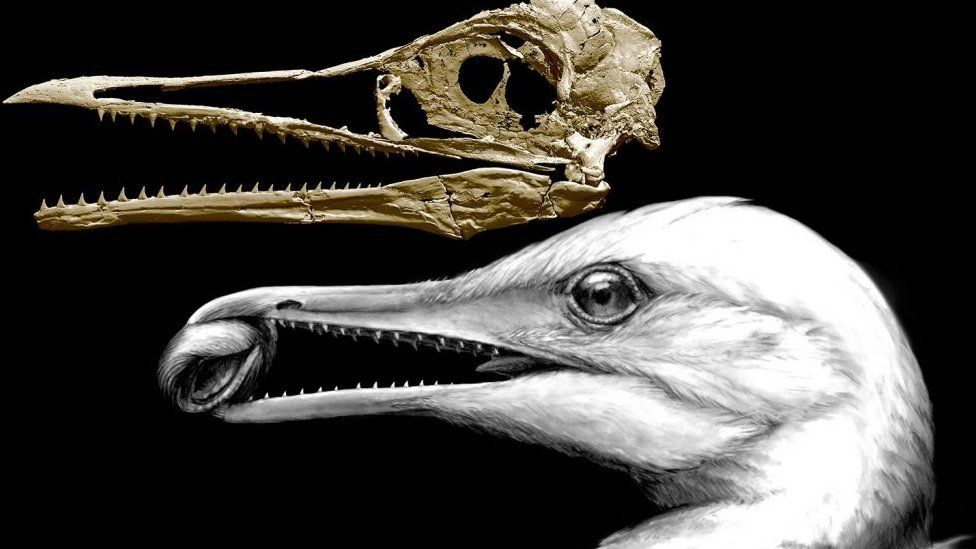How birds got their beaks - new fossil evidence
- Published

Scientists have pieced together the skull of a strange ancient bird, revealing a primitive beak lined with teeth.
The "transitional" bird sheds light on a pivotal point in the pathway from dinosaurs to modern birds.
Ichthyornis dispar lived in North America about 86 million years ago.
The seagull-sized bird had a beak and a brain much like modern birds, but the sharp teeth and powerful jaws of dinosaurs like Velociraptor.
"It shows us what the first bird beak looked like," said Bhart-Anjan Bhullar of Yale University, a study researcher.
"It's a real mosaic of features, a transitional form."
From feathers to flight
It has long been known that birds evolved from dinosaurs in what was a slow gradual process, involving feathers, wings and beaks.
Evidence for feathers has shown up in the fossil record, but it has proved very difficult to study the anatomy of the tiny delicate skulls of ancient birds.
The researchers combined fossil evidence from the complete skull and two previously overlooked cranial fossils with the latest CT scanning techniques to build an advanced 3D model of the skull of the primitive bird.
As study researcher Daniel Field, from the University of Bath, put it, most skull fossils are "squashed flat during the fossilisation process".
He said the "extraordinary new specimen", which was discovered only recently, reveals similar brain proportions to that of a modern bird, while other parts of the skull more closely resemble those of predatory dinosaurs.
Half-bird, half-dino
Dr Steve Brusatte of the University of Edinburgh, who is not connected with the research, described the study as a game-changer in how we understand the evolution of the bird beak and brain.
"The beaks of these primitive birds were very small and seem to have been evolving to take over some of the functions of the hand, like manipulating food and cleaning the feathers, that became impossible once the hands were incorporated into the wing," he said.
"This helps show that the evolution of birds from dinosaurs was a long and gradual process - it didn't just happen overnight, and for much of the Age of Dinosaurs there would have existed these creatures that looked half-dinosaur, half-bird."
The bones of Ichthyornis were first found in the 1870s by the US palaeontologist Othniel C Marsh.
The famous naturalist Charles Darwin read about the fossil and said the work on "old birds" afforded support for the theory of evolution.
A century or so on, the strange bird is filling in the gaps in our knowledge of these "extraordinary flying machines".
"Right under our noses this whole time was an amazing, transitional bird," said Dr Bhart-Anjan Bhullar.
The research is published in the journal, Nature.
Follow Helen on Twitter.
- Published5 March 2018
- Published7 July 2014